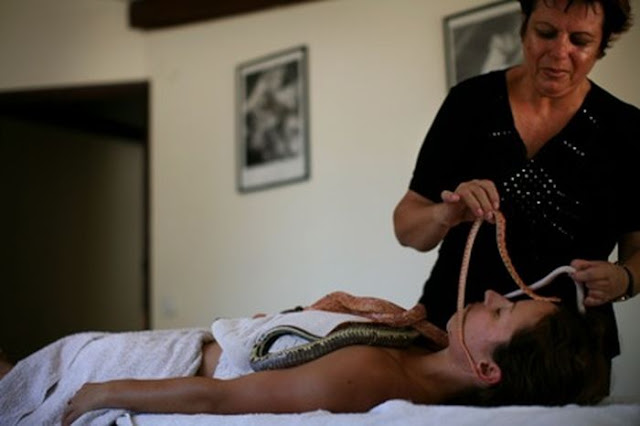Monday, April 26, 2021
Coke Can Camera - Makes Spying Easier
Saturday, April 24, 2021
Snake Massage
Snake Massage is becoming popular in Spas around the globe - England, Israel, Asia.
One treatment costs over $70.
Friday, April 23, 2021
Mind Blowing Look At Ancient Mummies
Thanks to books, movies, and local legend, Mummies have gotten a relatively bad (w)rap in the modern world. The fact of the matter is that not all mummies are cursed, nor are they all wrapped up and hidden away in a gold box within a giant pyramid.
Let’s take a look into the World of Ancient Mummies to hopefully get a better understanding of it all.
Not For Flavour…
Many mummies of Ancient Egypt were wrapped and buried with onions. They were most often used to fill the cavities of the body- especially the eye sockets.
Linen Lovers
The process of mummification took a LOT of linen. In fact, one ancient mummy from the 11th dynasty was uncovered with 9,095 feet (845 square meters) of the stuff. That’s enough linen to cover three full-sized tennis courts.
Running On Empty
During the Ancient Egyptian mummification process, internal organs were removed through a long incision on the left side of the body. The priest who made the incision was commonly known as either the “slicer” or “ripper up.”
That’s Just Gross
During the European Middle Ages, mummies were in high demand. Why? Because they were filled with magical health properties, duh. Wealthy Europeans would buy a mummy, boil it, and use the liquid to treat stomach aches, bruises, and a plethora of other ailments.
The One And Only
According to Egyptian lore, the first mummy was none other than the God Osiris.
Jars Of Organs
When the organs were removed from the body, they weren’t thrown away. They were put in Canopic Jars. These jars are named after the God Canopus.
Kid’s Got Heart
The heart was often left in the Mummy, as Egyptians believed that it was the heart that was judged upon entering the afterlife. The heart was also said to be protected by an amulet called ‘The heart scarab.’
A Rare Find
King Tut is, so far, the only Ancient Royal Mummy to have been discovered with all of its priceless treasures intact.
Not Only Humans
Ancient Egyptians mummified plenty of animals such as hawks, crocodiles, cats, rams, and lizards.
A Risky Business
Grave robbers faced a pretty harsh fate if they were caught robbing a grave. The soles of their feet would be beaten publicly, and then they would be impaled with a sharp stick.
Meow
There have been over 1,000,000 mummies discovered in Egypt. Most of them are of cats. Also, mummies aren’t exclusively Egyptian and have been found on every continent.
Part Of The Process
Egyptians saw mummification as a very important step towards successfully making it into a happy afterlife.
We’re Not So Different
Autopsies on mummies have shown that many of the ancient people of Egypt also suffered from illnesses we deal with today. clogged arteries, metastatic prostate cancer, malnutrition, gastrointestinal infections, and sinusitis.
Waddup Dog
In ancient Egypt, chief embalmers often wore a mask of the God of Anubis. Embalmers were seen both as doctors and as members of the priestly class.
A Long Process
Mummification typically took around 40 days. During this time, the body shrinks significantly due the dehydrating effects of mummification.
Our Lips Are Sealed
Embalmers typically used beeswax to seal a corpse’s mouth, nasal passages, and other body cavities. Egyptians valued bees due to their ‘magical properties.’































































